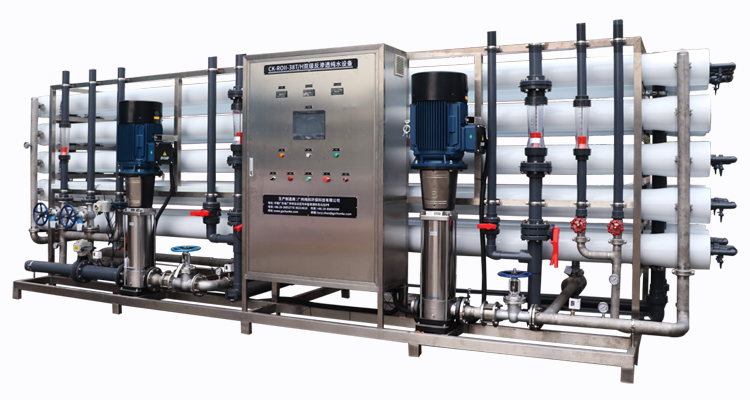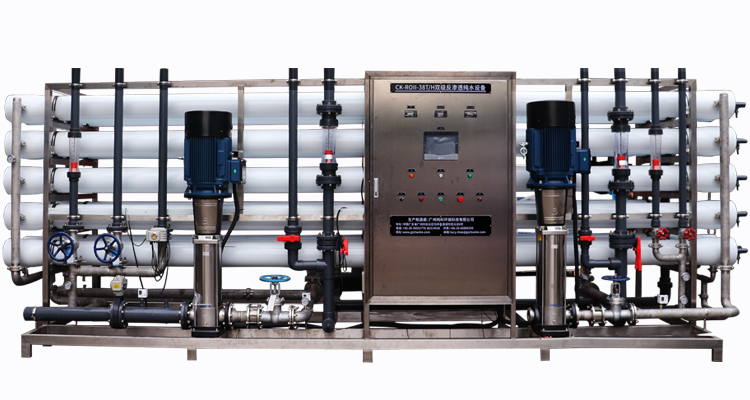How many steps does disinfection in water treatment have?
Disinfection in water treatment is one of the important steps to ensure the safety of water supply. It involves a series of treatment processes to ensure that microorganisms and pathogens in the water are effectively removed or killed.

5 key steps for disinfection in water treatment:
1. Preprocessing:
Before disinfection, water usually requires pretreatment, including steps such as filtration and coagulation and flocculation. These steps help remove suspended solids, sediment and other impurities from the water to reduce interference with subsequent disinfection processes.
2. Adding disinfectant:
Disinfectants are chemicals used to kill bacteria, viruses and other pathogenic microorganisms in water. Commonly used disinfectants include chlorine, sodium hypochlorite, ozone and ultraviolet light. These disinfectants will be added to the water and react with the microorganisms in the water to achieve the purpose of disinfection.
3. Reaction and contact time:
It takes a certain amount of time for the disinfectant to react with microorganisms in the water, which is called contact time. During the disinfection process, water usually goes through a certain reaction and contact time to ensure that the disinfectant can fully contact and react with the microorganisms in the water to achieve complete killing effect.
4. Residual disinfection:
In order to prevent re-contamination by microorganisms during water transportation and storage, a certain amount of disinfectant is usually added after disinfection to maintain the residual disinfection effect of the water. This helps keep the water disinfected and ensures the safety of the water supply.
5. Testing and Monitoring:
Regular testing and monitoring of disinfected water samples are critical steps to ensure the disinfection process is effective. This can be achieved by measuring disinfectant residues and microbial concentrations in the water to ensure that the water quality meets relevant health standards and regulatory requirements.
Through the organic combination of the above steps, disinfection in water treatment can effectively ensure the safety and hygienic quality of water supply and ensure the safety of people's drinking water.

What are the commonly used disinfectants for disinfection in water treatment?
Disinfection in water treatment is one of the important steps to ensure the safety of water supply, and the choice of disinfectant is crucial to the disinfection effect.
Commonly used disinfection in water treatment agents:
1. Sodium hypochlorite (NaClO): Sodium hypochlorite is a commonly used disinfectant that is widely used in tap water and sewage treatment. It can quickly kill bacteria, viruses and other pathogenic microorganisms in water, and is an effective disinfectant.
2. Chlorine (Cl2): Chlorine is a powerful disinfectant commonly used in large water treatment plants and water supply systems. It has the characteristics of rapid sterilization and long-lasting disinfection effect, but it needs to be operated with care to avoid harm to the human body and the environment.
3. Ozone (O3): Ozone is a highly oxidizing disinfectant that can effectively kill microorganisms and organic matter in water. It is a relatively environmentally friendly disinfectant.
4. Ultraviolet (UV): Ultraviolet disinfection is a physical disinfection method that can kill bacteria, viruses and other microorganisms in water through ultraviolet irradiation. It does not produce by-products and has no impact on water quality.
5. Ozone-chlorine (O3-Cl2) mixed oxidation method: This is a disinfection method that uses a mixture of ozone and chlorine, which can give full play to the disinfection effects of both and improve the disinfection effect.
The above are commonly used disinfection in water treatment agents. When choosing a suitable disinfectant, you need to consider factors such as water quality characteristics, disinfection requirements, and safety.

How to ensure the disinfection effect during disinfection in water treatment?
Disinfection in water treatment is an important step in ensuring the safety of water supply, and the key to ensuring the disinfection effect lies in the following aspects:
1. Choose the right disinfectant: For different water quality and disinfection requirements, it is crucial to choose the right disinfectant. Commonly used disinfectants include chlorine, sodium hypochlorite, ozone, etc., which need to be selected according to water quality characteristics and disinfection needs.
2. Control the dosage and concentration: When adding disinfectant, it is necessary to control the dosage and concentration to ensure that the disinfectant can achieve the expected bactericidal effect while avoiding water pollution and side effects caused by excessive dosage.
3. Ensure sufficient contact time: It takes a certain amount of time for the disinfectant to react with microorganisms in the water, which is called contact time. During the disinfection process, sufficient contact time needs to be ensured to ensure that the disinfectant can fully contact and react with the microorganisms in the water.
4. Regular testing and monitoring: Regular testing and monitoring of disinfected water samples is a key step to ensure the effectiveness of disinfection. By measuring the residual amount of disinfectant and the concentration of microorganisms in the water, problems with substandard disinfection effects can be discovered in a timely manner, and corresponding measures can be taken to adjust and improve.
5. Proper operation and maintenance: Proper operation and regular maintenance of disinfection in water treatment equipment are also important measures to ensure the disinfection effect. Clean and replace disinfection equipment regularly to ensure stable operation of the equipment and long-lasting disinfection effect.
Through the comprehensive application of the above measures, the disinfection effect of the disinfection in water treatment process can be effectively ensured, and the safety of water supply and water quality and hygiene can be guaranteed.




